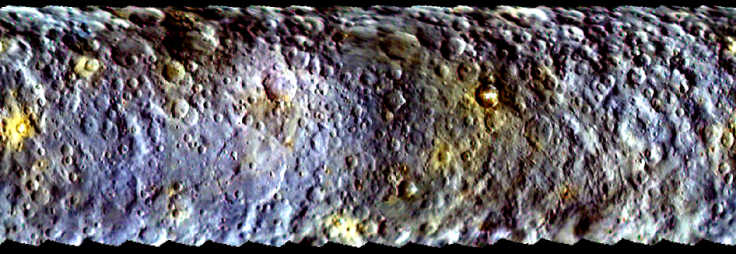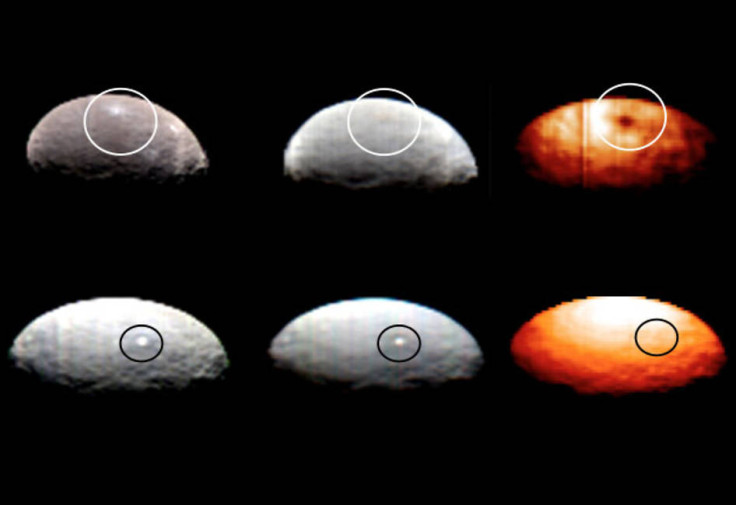Ceres: Strange bright spots will be identified during close approach by Dawn next week

The pair of strange, bright spots on the surface of dwarf planet Ceres will be identified when the spacecraft Dawn begins a study of the asteroid next week from a distance of 13,500 km from the surface.
The "alien" spots on the surface were captured by the probe when 45,000 km away and are believed to be either towering water volcanoes or simply different structures or material compositions on the rocky body.
Named feature 1 and feature 5, the spots show up in visible light images as bright flashes in comparison to the rest of Ceres's surface.
There are around 10 bright spots on Ceres's heavily cratered surface identified by the Hubble Space Telescope. But the two spots behave differently, according to Nasa's infrared images.
"What we have found is that bright spot number one corresponds to a dark spot in the thermal image," Federico Tosi, who works on Dawn's Visible and Infrared Spectrometer, told a press conference.
But feature five, which appears as two separate bright spots next to each other in visible images, did not show up in the infrared images indicating absence of heat.
More details will emerge after the spacecraft begins its first intensive science phase on 23 April, said Martin Hoffmann, investigator on the Dawn framing camera team, based at the Max Planck Institute for Solar System Research, Göttingen, Germany.
Differences in morphology and colour across the surface suggest Ceres was once an active body.
"This dwarf planet was not just an inert rock throughout its history. It was active, with processes that resulted in different materials in different regions. We are beginning to capture that diversity in our colour images," said Chris Russell, principal investigator for the Dawn mission, based at the University of California, Los Angeles.
The glimmers of light are visible even when viewed on the edge of the rotating Ceres, suggesting they are at a height, while varying intensity suggests sunlight plays a role.
Sunlight could be heating up ice just beneath the surface and causing it blast off in a plume, suggests a study.
Scientists have speculated that the interior of Ceres is rocky with a layer of water and ice.
The ice at the spots is covered by a thin layer of soil that spurts as "cryovolcanoes" due to internal pressure in the asteroid.
Ceres is 950 km across and was discovered in 1801. It is the largest object in the asteroid belt between Mars and Jupiter and has an average diameter of 950 km.
Ceres is quite similar to Jupiter's moon Europa and Saturn's moon Enceladus, with potential for harbouring life.
Water bodies
The abundance of water in bodies like Ceres suggests that as giant planets migrated they disturbed the small rocky and icy asteroids and comets, causing them to hit early Earth and deliver organic molecules and water in the process.
Since launching in 2007, Dawn has already visited Vesta, another giant object currently located 168 million km away from Ceres in the same belt.
Ceres may have formed later than Vesta. The older date implies radioactive material on Vesta had heated the body and vaporised the water.
Ceres, in contrast, has a thick ice mantle and may even have an ocean beneath its icy crust.

© Copyright IBTimes 2025. All rights reserved.





















